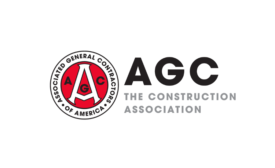Home » AGC (Associated General Contractors of America)
Articles Tagged with ''AGC (Associated General Contractors of America)''
Construction firms are getting some needed relief from rising materials costs, but new Buy America rules will pose a big challenge to firms trying to find materials that comply, leading to increased costs
Read More
Survey Shows Nation’s Construction Career Preparation Flaws and its Economic Effect
Eighty-eight percent of construction firms are having a hard time finding workers to hire, undermining efforts to build infrastructure and other projects as firms boost pay and embrace AI to cope with labor shortages
September 7, 2023
Construction Firms Add 25,000 Jobs in May with Second-Lowest Unemployment Rate
Most of the construction gains occurred in the nonresidential construction sector, while firms now pay workers 19 percent more compared to the average job as they struggle to recruit new people
September 3, 2023
Construction Employment Rises in 231 of 358 Metro Areas from April 2022 to 2023
Dallas-Plano-Irving, Texas, and Hanford-Corcoran, California, experience largest number and percentage of gains; Los Angeles-Long Beach-Glendale, California, and Monroe, Michigan, have most extensive construction job losses
August 30, 2023
Construction Employment Rises in 45 States and D.C. from July 2022 to 2023
Texas and Arkansas top lists of year-over-year gains while Colorado and North Dakota record the worst losses, Texas and Nebraska lead in monthly job increases while Washington and Maine experience largest declines
August 24, 2023
Construction Employment Rises in 42 States Over the Past Year while 24 States Add Employees in April
Texas and Arkansas top list of yearly gains while California and West Virginia experience worst losses; Washington and South Dakota lead in monthly job increases while Texas and Alaska have largest declines
August 21, 2023
Bid Prices Fall 1.4 Percent as Construction Materials and Services Prices Increase 0.2 Percent in July
Construction material prices remain mostly flat in July; Buy America rules remain an ongoing challenge for firms as they try to find materials that comply
August 15, 2023
Massive New Department of Labor Davis-Bacon Rule Misses the Mark to Modernize Regulations
Department of Labor issues final rule on the Davis-Bacon and Related Acts, which covers labor standards that apply to federal and federally assisted construction projects
August 10, 2023
Construction Employment Rises in 221 of 358 Metro Areas from June 2022 to 2023
Dallas-Plano-Irving, Texas, and Corvallis, Oregon, experience largest number and percentage of gains; St. Louis and Monroe, Michigan, have most extensive construction job losses during the past year
August 8, 2023
Construction Material Prices Rise 0.5 Percent in April as Bid Prices Slip, Squeezing Contractor Profits
Double-digit annual cost increases persist for several materials despite recent price declines for some; association officials say Administration’s approach to Buy America rules is contributing to price inflation
August 6, 2023
Connect with the industry’s leading resource for unparalleled insights and education.
Join thousands of industry professionals today. Shouldn’t you know what they know?
JOIN NOWCopyright ©2024. All Rights Reserved BNP Media.
Design, CMS, Hosting & Web Development :: ePublishing
